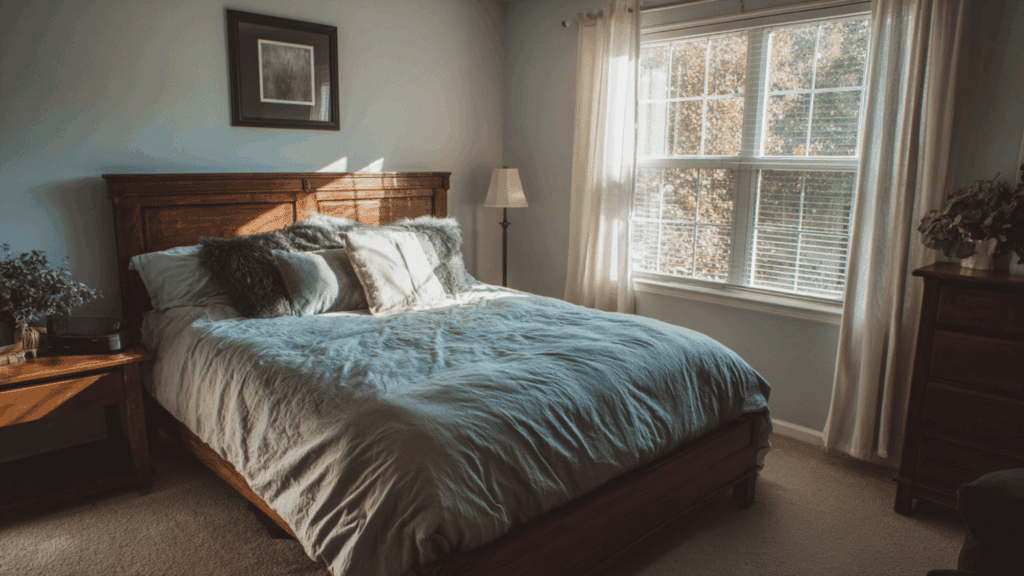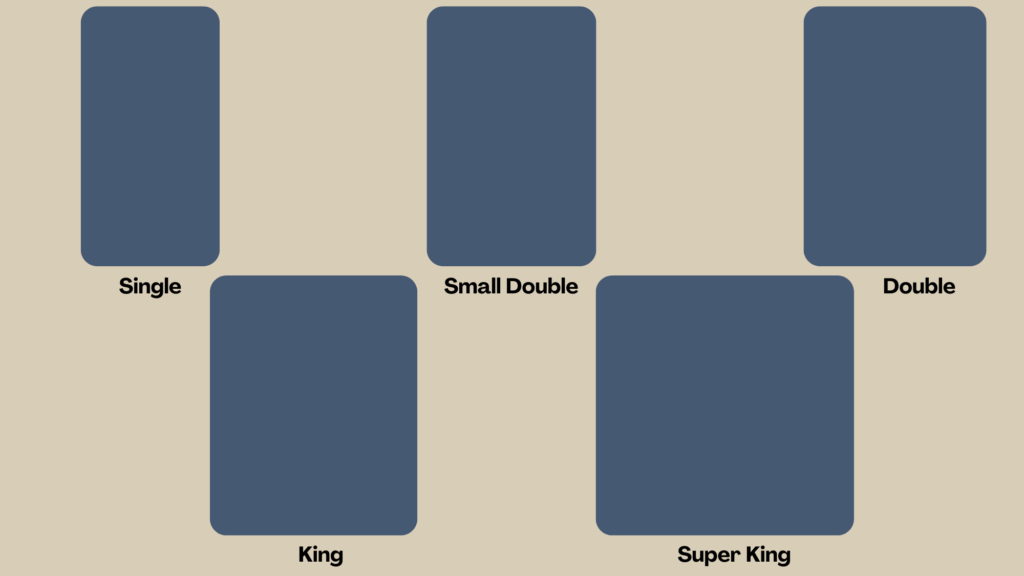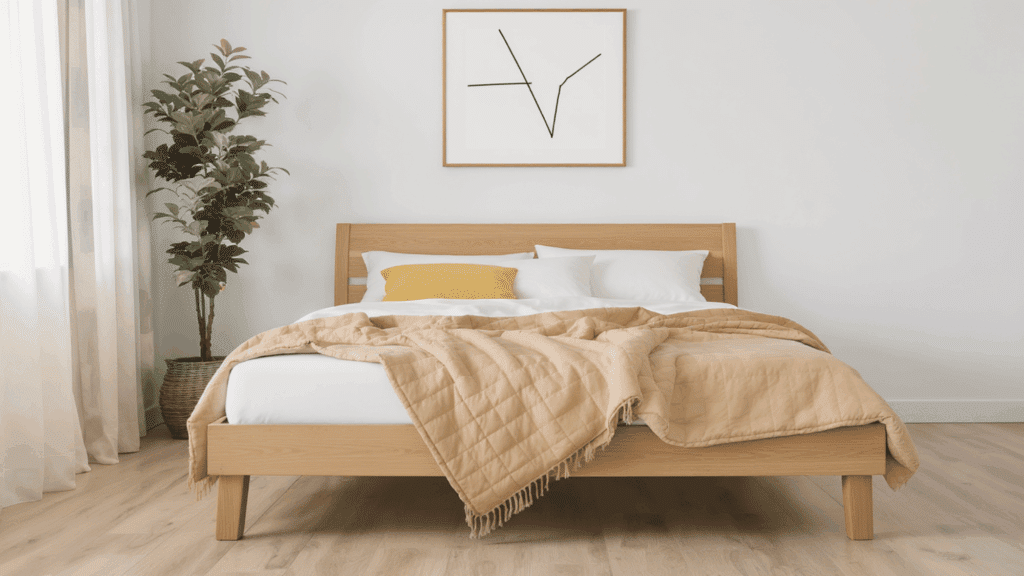Ever walked into a furniture store and felt completely lost by all the bed size options? You’re not alone.
Most people know about twin and queen beds. But what about that mysterious 3/4 size? It sits somewhere between a twin and a full, and honestly, it’s confusing.
Choosing the wrong bed size can mess with your sleep quality and room layout. Too small, and you’re cramped. Too big, and your bedroom feels like a shoebox.
I’m going to break down the 3/4 bed size and compare it with other common options. By the end, you’ll know exactly which size fits your space and needs.
What is a 3/4 Bed Size?
A 3/4 bed measures 48 inches wide by 75 inches long. It’s basically the middle child of bed sizes.
Think of it this way: it’s 9 inches wider than a twin but 6 inches narrower than a full. Not quite a single, not quite a double. It’s that in-between size that works perfectly for certain situations.
You’ll mostly find 3/4 beds in older homes, guest rooms, or smaller apartments. They’re popular in Europe and were common in America decades ago.
Today, they’re making a comeback as people look for space-saving solutions that still offer decent sleeping room.
Standard Dimensions of a 3/4 Bed

Let me break down the exact measurements for you. Here’s what you need to know when shopping for a 3/4 bed or its bedding:
| Measurement | Dimensions |
|---|---|
| Width | 48 inches |
| Length | 75 inches |
| Total Area | 25 square feet |
| Mattress Height (typical) | 8-12 inches |
Benefits of Choosing a 3/4 Bed Size
A 3/4 bed offers some real advantages that other sizes can’t match. Here’s why this middle-ground option might be perfect for your situation:
- Space efficiency: It maximizes sleeping comfort while leaving room for other furniture, wardrobes, or walking space in smaller bedrooms.
- Cost savings: Mattresses, frames, and bedding are generally cheaper than full-size options, helping your wallet without sacrificing quality sleep.
- Easier to move: Lighter and more manageable than larger beds, making it perfect if you relocate frequently or live in apartments with narrow staircases.
- Better for kids’ rooms: Gives growing children extra space compared to twins while still fitting comfortably in standard kids’ bedroom dimensions.
- Versatile placement: Fits well against walls or in corners, giving you more flexibility with your room layout and design options.
How a 3/4 Bed Size Compares to Other Bed Sizes

Understanding how a 3/4 bed stacks up against other options helps you make the right choice. Let’s compare it with the most common sizes.
1. Single Bed
A single bed measures 36 inches wide by 75 inches long. That’s 12 inches narrower than a 3/4 bed.
Those extra inches matter more than you’d think. A single works fine for kids or tight spaces, but adults often feel cramped.
The 3/4 gives you more rolling room without taking up as much space as a small double bed. It’s a sweet spot for solo sleepers who want a bit more comfort.
2. Small Double Bed
A small double is 48 inches wide and 75 inches long. Actually, that’s the same as a 3/4 bed.
In the UK and Europe, they call it a small double. In America, it’s a 3/4 bed. Same dimensions, different names. It fits two people if you don’t mind getting cozy, but it’s really best for one person who wants extra space.
If you’re single and have a smaller bedroom, this size is your sweet spot. You get comfort without overwhelming your room.
3. Double Bed
A double measures 54 inches wide by 75 inches long. That gives you 6 extra inches compared to a 3/4.
The double is one of the most popular bed sizes worldwide. It fits two people, though it’ll be snug. The 3/4 bed is really designed for one person who wants extra space.
If you’re single and have a smaller bedroom, the 3/4 might be your better bet. You’ll save floor space without sacrificing too much comfort.
4. King Bed
A king measures 60 inches wide by 80 inches long. It’s 12 inches wider and 5 inches longer than a 3/4.
Now we’re talking about a significant jump in size. Kings are ideal for couples or people who really spread out. But they take up serious real estate in your bedroom.
A 3/4 bed uses about 40% less floor space. If you’re working with a small room or studio apartment, that difference can be a game-changer for your layout.
5. Super King Bed
A super king bed is 72 inches wide by 78 inches long. That’s 24 inches wider than a 3/4 bed.
Honestly, these aren’t even in the same category. A super king is a luxury sleeping option for couples who want maximum space or families with kids who climb in. The 3/4 is practical and compact.
Comparing them is like comparing a studio apartment to a three-bedroom house. Different purposes, different lifestyles. Choose based on your actual needs and room size.
Who is a 3/4 Bed Ideal For?
Let’s be real: a 3/4 bed isn’t perfect for everyone. It comes with some limitations you should consider.
The biggest issue? Finding bedding. Most stores focus on twin, full, queen, and king sizes. You’ll struggle to find sheets and comforters that fit properly. Online shopping helps, but it’s still frustrating.
It’s also too small for couples. Two adults will feel cramped and uncomfortable. And if you’re a restless sleeper who moves around a lot, you might find yourself hanging off the edges.
Finally, resale value isn’t great. Most buyers want standard sizes, making it harder to sell used
Practical Tips for Choosing the Right Bed Size
Picking the right bed size goes beyond just measurements. Consider these practical factors before making your final decision. Here’s what really matters:
- Measure your room first: Leave at least 24-30 inches of walking space on each side and at the foot of the bed for comfortable movement.
- Think about your sleeping style: If you toss and turn or sleep spread out like a starfish, you’ll need more width than a still sleeper.
- Consider future needs: A bed for a growing teenager or a guest room that might accommodate couples requires different-sized planning.
- Check doorways and stairs: Make sure your chosen mattress and frame can actually fit through your home’s entry points and hallways.
- Test before buying: Lie down on display models at stores to get a real feel for whether the size truly works for your body and comfort preferences.
To Conclude
Choosing a bed size isn’t just about measurements on paper. It’s about how you actually live.
A 3/4 bed works brilliantly for solo sleepers in compact spaces. It gives you breathing room without eating up your entire bedroom. But it’s not for everyone, especially couples or those who need readily available bedding options.
Measure your space carefully. Think about your sleep habits and lifestyle. And remember, the best bed size is the one that helps you wake up refreshed, not the one that looks good on a showroom floor.
Your bedroom should work for you, not against you. Choose wisely.

